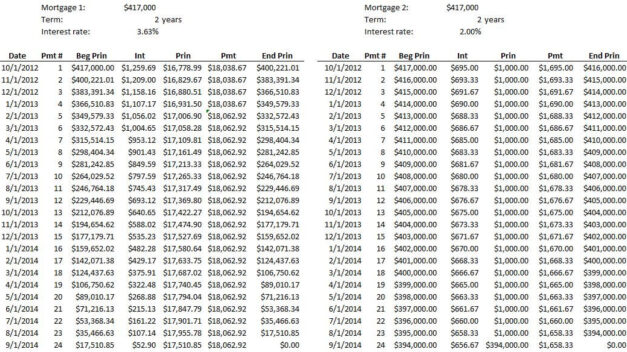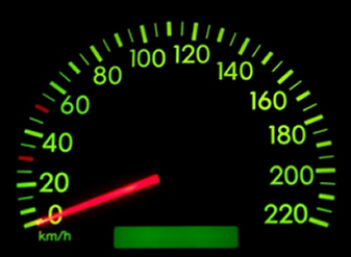A balloon loan is a loan with a large payment made near or at the end of the loan term.
Unlike a loan whose total cost (interest and principal) is amortized -- that is, paid incrementally during the life of the loan -- a balloon loan's principal is paid in one sum at the end of the term. That sum is called the balloon payment (or sometimes the bullet). Sometimes the interest is collected as part of the balloon payment as well, though in many cases the loan is interest-only during the term of the loan with only the outstanding principal due at the end.
For example, suppose someone takes out a mortgage for $417,000. To avoid a lengthy graphic with 360 payments for a 30-year mortgage, we'll assume that the mortgage is only two years long (this is an unrealistic loan term, but it works for our purposes).
In a normal mortgage scenario (the left side of the graphic), the borrower would make a series of equal payments that are composed of principal repayment and interest payment so that by the end of the loan term, the borrower has paid down all of the loan. If the loan includes a balloon payment (the right side of the graphic), however, the monthly payments might be extremely low for most of those two years -- because at the end of the two years the borrower has to make a giant balloon payment to pay off the loan.

Balloon loans often appear in the mortgage market, and they have the advantage of lower initial payments. Balloon loans can be preferable for companies or people that have near-term cash flow issues but expect higher cash flows later, as the balloon payment nears. The borrower must, however, be prepared to make that balloon payment at the end of the term. If the balloon payment is part of a mortgage, sometimes the lender will roll that amount into a new mortgage for the borrower. This is often called a two-step mortgage.



